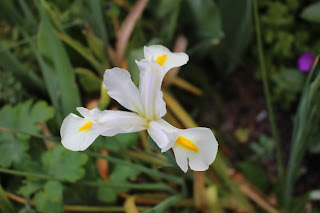Oh yuck - who lives here?
I spied a few undesirables in my cutlery drawer, and when I took out the utensils, I saw the full extent of the grossness. Along with the dust and mouse poops were live disgusting larder beetle larvae.
This small beetle belongs to the Dermestidae family. Adults are dark brown or black and measure 6 to 9 mm in length. Their elongated, flattish bodies have a light brown to yellowish horizontal strip marked by 6 dark spots. Two club-shaped antennae extend from the head, and two pairs of wings are attached to the thorax.
The female lays 100 to 200 eggs after mating in the spring and early summer. The banana-shaped egg clusters are placed in groups of 6-8 directly on their food source—this might be the corpse of a bird or animal, or oily foods in your pantry. After about 10 days, small larvae appear.
In the larval stage, it looks like a small yellowish-brown worm covered with hairs. It is 3 to 5 mm long and has two curved horn-like appendages. The larva goes through 4 to 5 moults before transforming into a nymph and emerging in its adult form after a rest period.
Prefered foods:
- Cheese
- Cake
- Dry animal food
- Rodent and bird carcasses
- Insects, especially earthworms and ladybugs
- Flowers
- Hair and fur
- Dead skin
- Fabrics and natural materials
- the larvae of other larder beetles.
Unless you want to call in the big guns like a pest control company, the best solution is seal cracks where they get in, and to clean the drawers more often than I do.



















